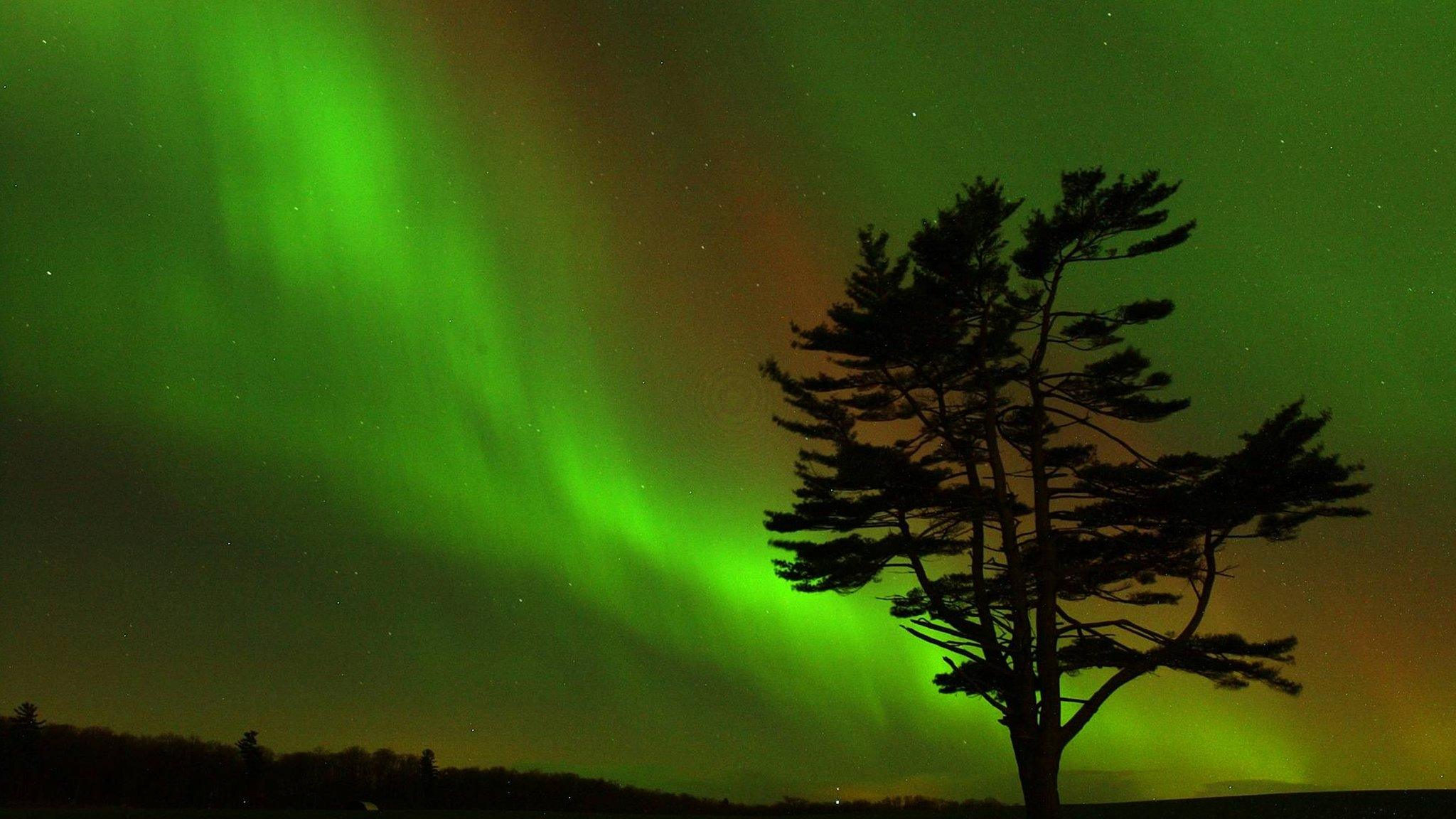Amber alert for sightings of aurora over Scotland
- Published
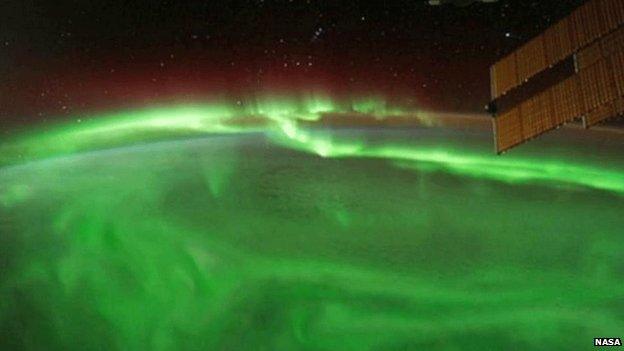
A Nasa image from the International Space Station of Tuesday's geomagnetic storm
Lancaster University's AuroraWatch UK has issued its second highest alert for sightings of the aurora borealis.
Tuesday's amber alert suggests the Northern Lights is likely to be visible from Scotland, northern England and Northern Ireland - if the sky is clear.
British Geological Survey said a geomagnetic storm, the cause of the aurora, was "currently in progress".
It could mean a hat-trick of big astronomical events following a meteor on Sunday and solar eclipse on Friday.
A spectacular meteor was photographed from the shores of Loch Ness on Sunday by tourist guide John Alasdair Macdonald.
The same event, or other meteors, was seen from other parts of the UK, including the Western Isles and Cumbria.
The aurora borealis is caused by the interaction of the solar wind - a stream of charged particles escaping the Sun - and Earth's magnetic field and atmosphere.
From the ground in the Scotland, the Northern and Western isles, the Highlands and north east Scotland offer some of the best places to observe the Northern Lights at night.
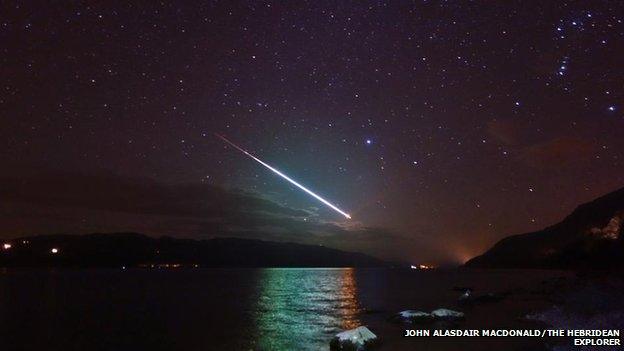
A meteor was photographed from the shores of Loch Ness on Sunday night
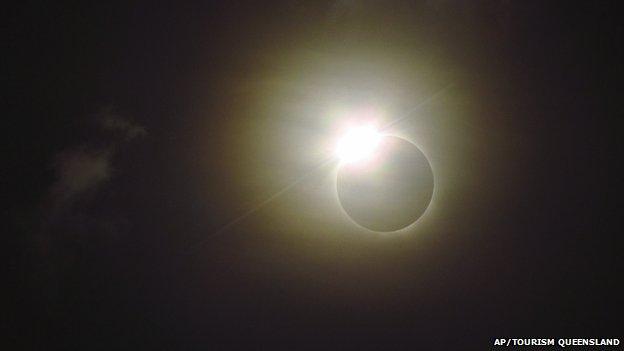
There will be a solar eclipse on Friday

The aurora borealis over Scotland in an image taken by Nasa astronaut Terry Virts last month
Aberdeen's associations with the aurora borealis are celebrated in the local song, The Northern Lights of Old Aberdeen.
In the past, the city's tourist information staff have been asked when the "lights were turned on" by visitors unclear what causes the displays.
Last month, a Nasa astronaut photographed the aurora borealis over Scotland from the International Space Station.
Baltimore-born Terry Virts, a member of Expedition 42 to the space station, captured the image of the Northern Lights.
ISS orbits between 230-286 miles (370-460km) above the Earth's surface.
- Published16 March 2015
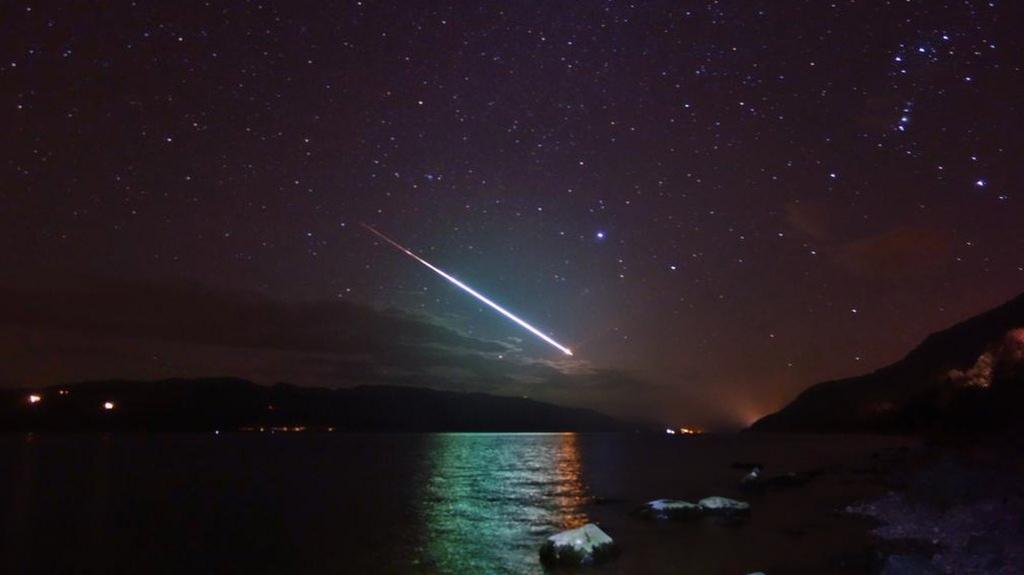
- Published12 February 2015
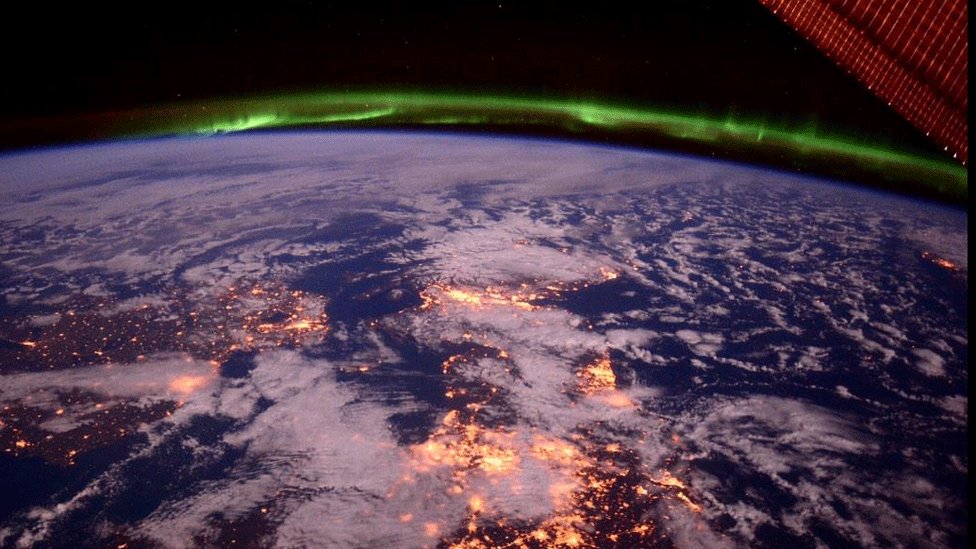
- Published9 January 2014
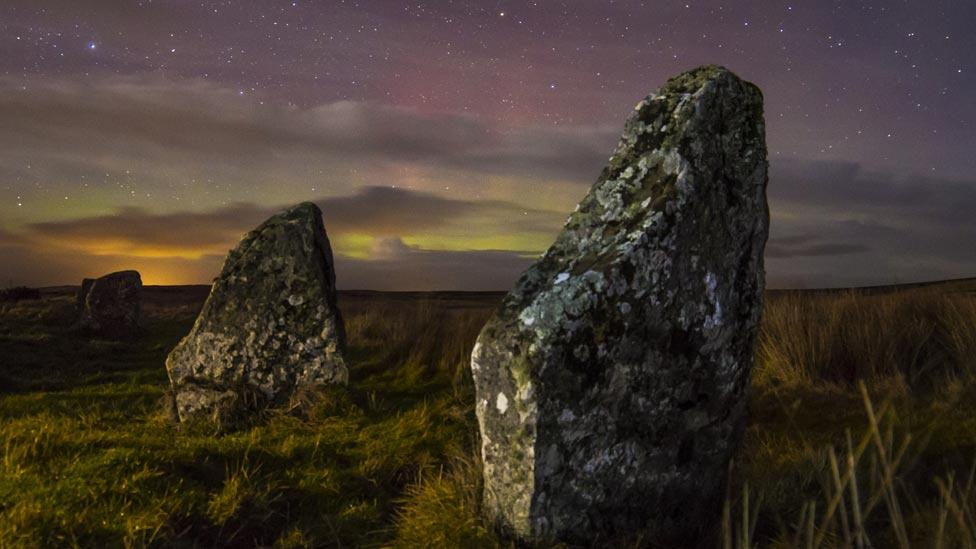
- Published21 August 2012
